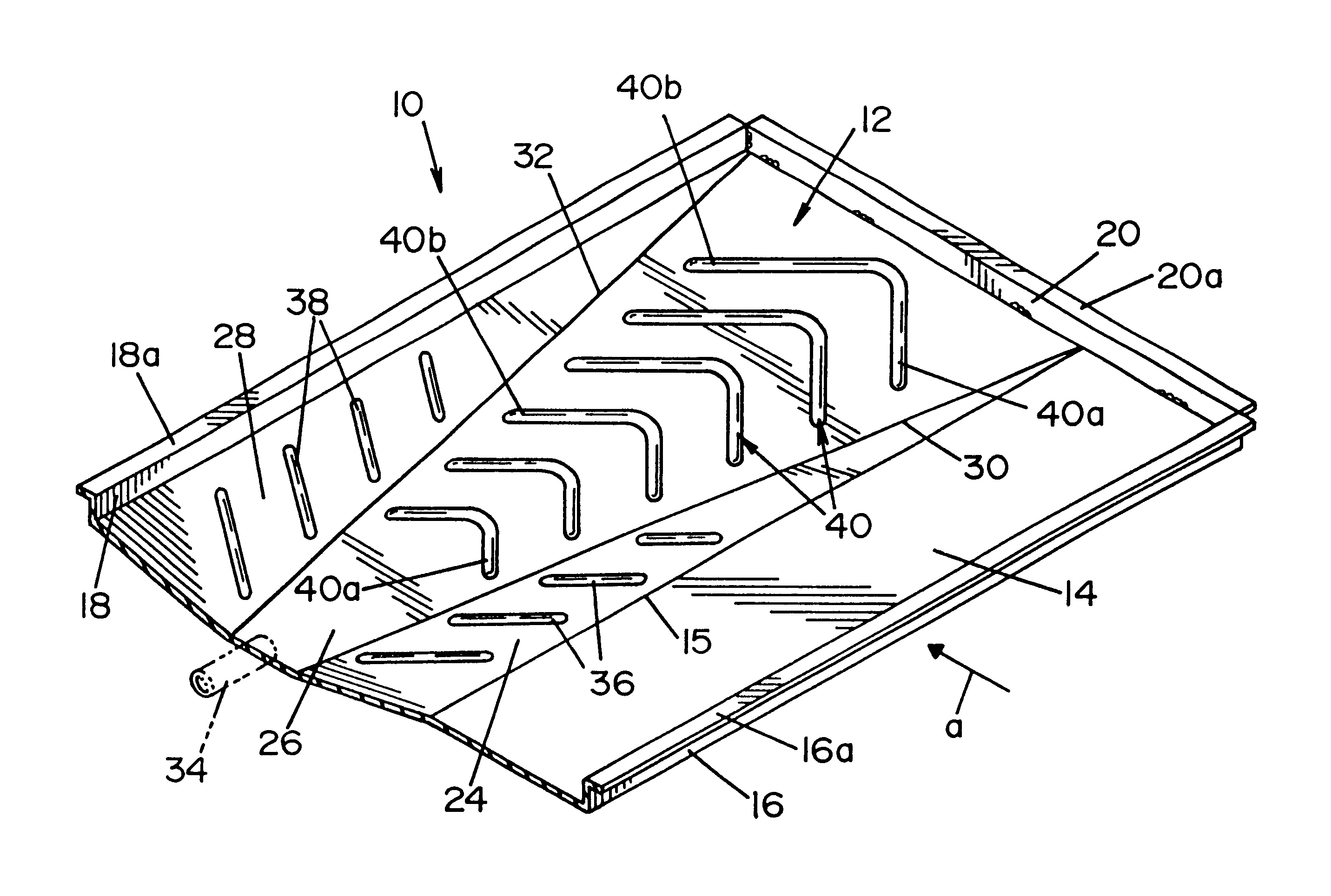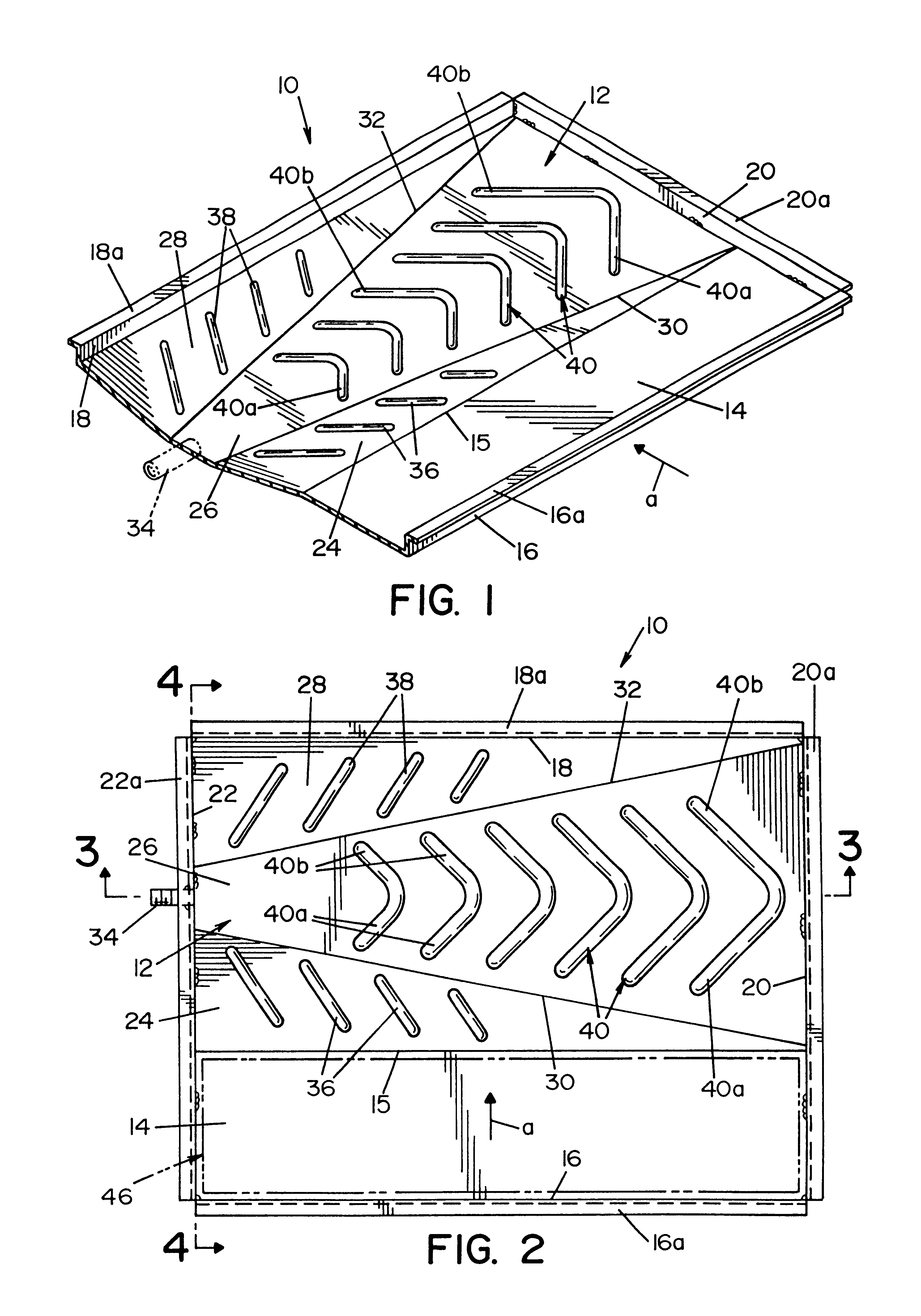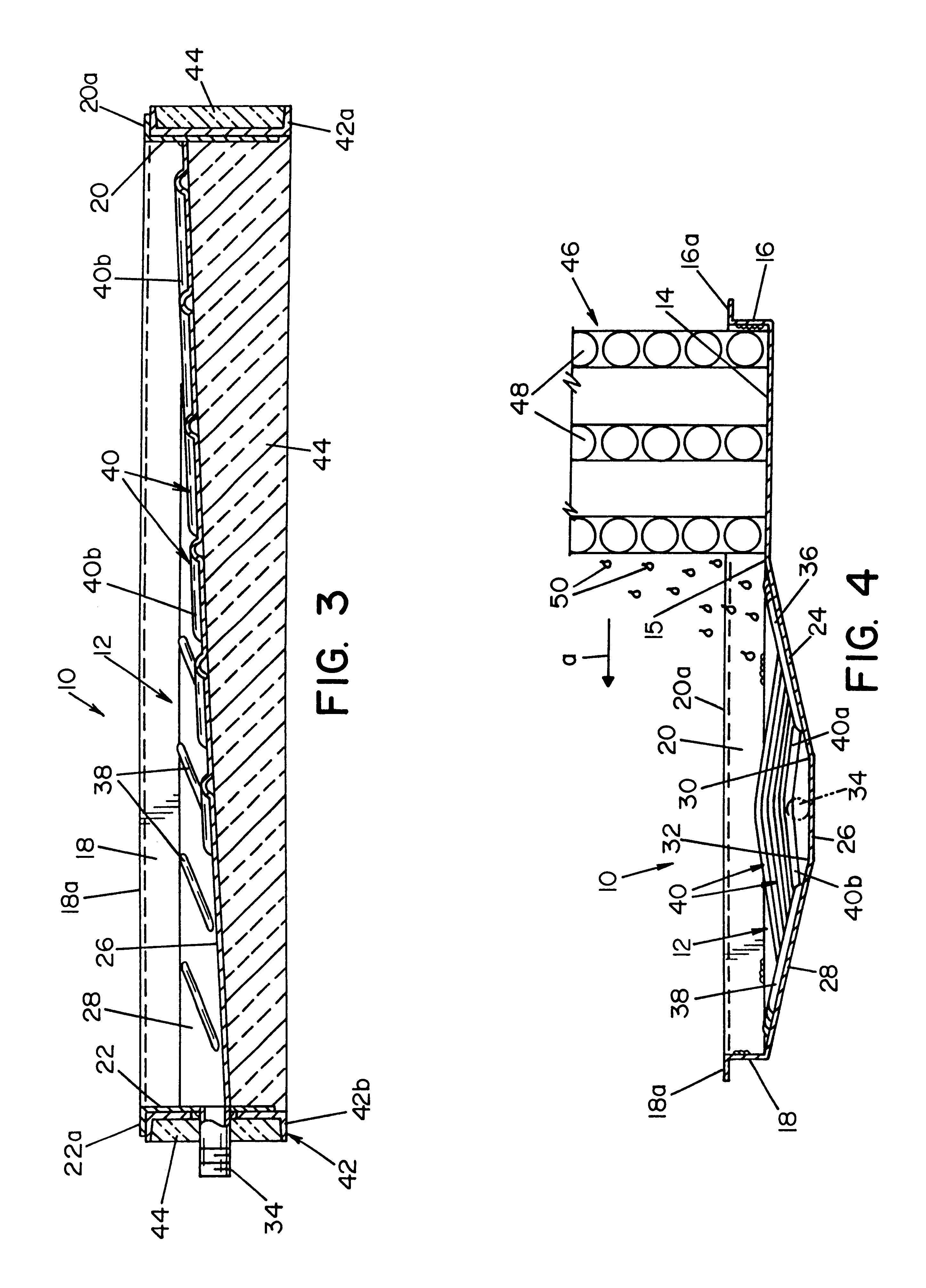Condensate drain pan
a condensate and drain pan technology, applied in the field of condensate drain pans, can solve the problems of increasing the problem, cumbersome installation and fastening of the drain pan to the hvac unit, and affecting the quality of air in the home, so as to reduce the chance of microbial accumulation, and reduce the effect of microbial growth
- Summary
- Abstract
- Description
- Claims
- Application Information
AI Technical Summary
Benefits of technology
Problems solved by technology
Method used
Image
Examples
Embodiment Construction
Referring now in greater detail to the drawings wherein the showings are for the purpose of illustrating a preferred embodiment of the invention only and not for the purpose of limiting the invention, a condensate drain pan 10 in accordance with the invention comprises a compound-sloped floor surface 12 and a laterally adjacent flat floor surface 14 bounded by an upwardly extending peripheral wall defined by a front wall 16, a back wall 18 and opposite side walls 20 and 22. Flat floor surface 14 is located on the upstream side of airflow a Each of the foregoing walls has an upper end terminating in a corresponding outwardly extending flange respectively designated 16a, 18a, 20a, and 22a. Compound-sloped floor surface 12 includes three faces 24, 26, and 28, each of which is generally triangular in peripheral contour. Face 24 slopes downwardly and inwardly from the inner edge 15 of floor surface 14, face 26 slopes downwardly from side wall 20 to side wall 22, and face 28 slopes downwa...
PUM
 Login to View More
Login to View More Abstract
Description
Claims
Application Information
 Login to View More
Login to View More - R&D
- Intellectual Property
- Life Sciences
- Materials
- Tech Scout
- Unparalleled Data Quality
- Higher Quality Content
- 60% Fewer Hallucinations
Browse by: Latest US Patents, China's latest patents, Technical Efficacy Thesaurus, Application Domain, Technology Topic, Popular Technical Reports.
© 2025 PatSnap. All rights reserved.Legal|Privacy policy|Modern Slavery Act Transparency Statement|Sitemap|About US| Contact US: help@patsnap.com



